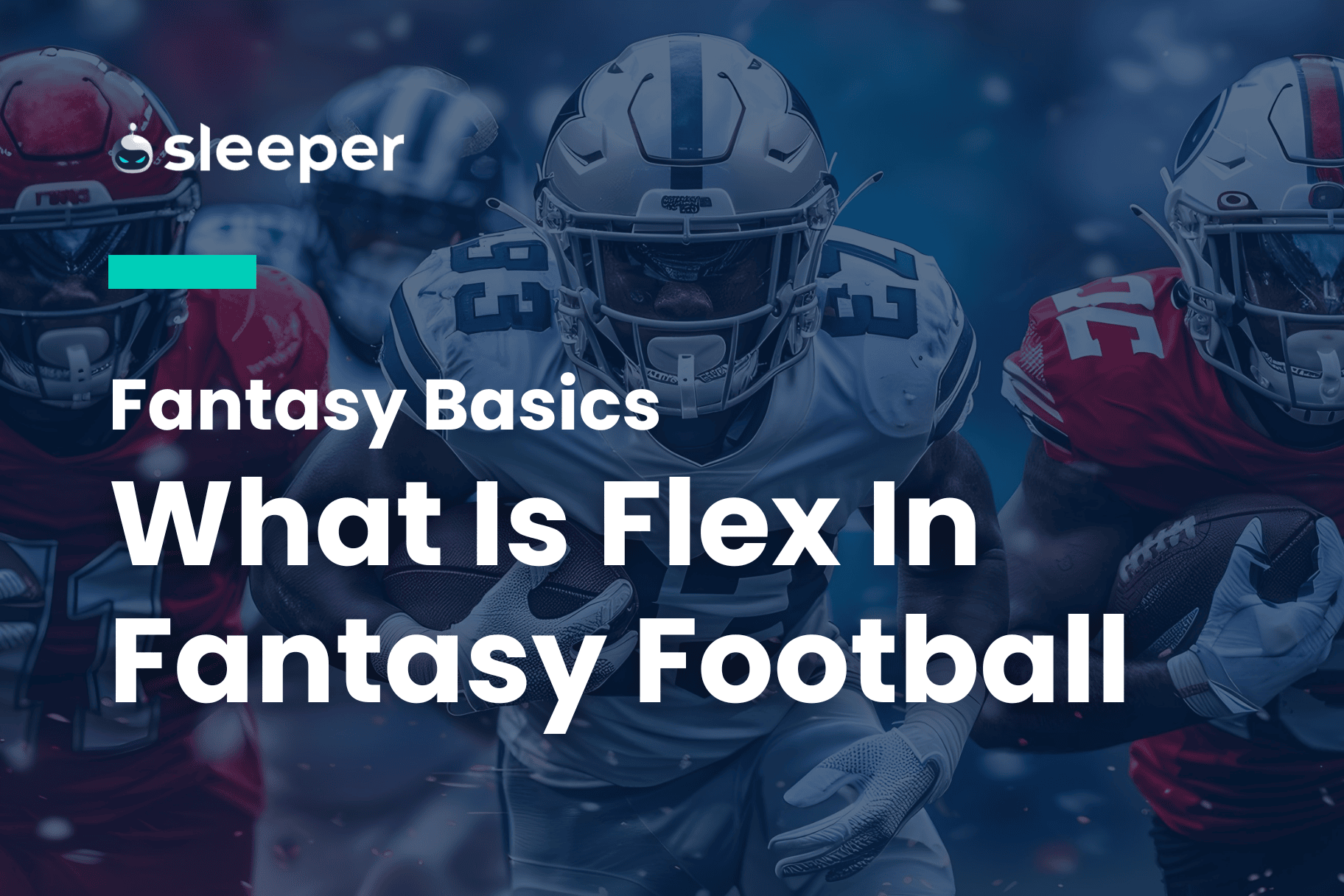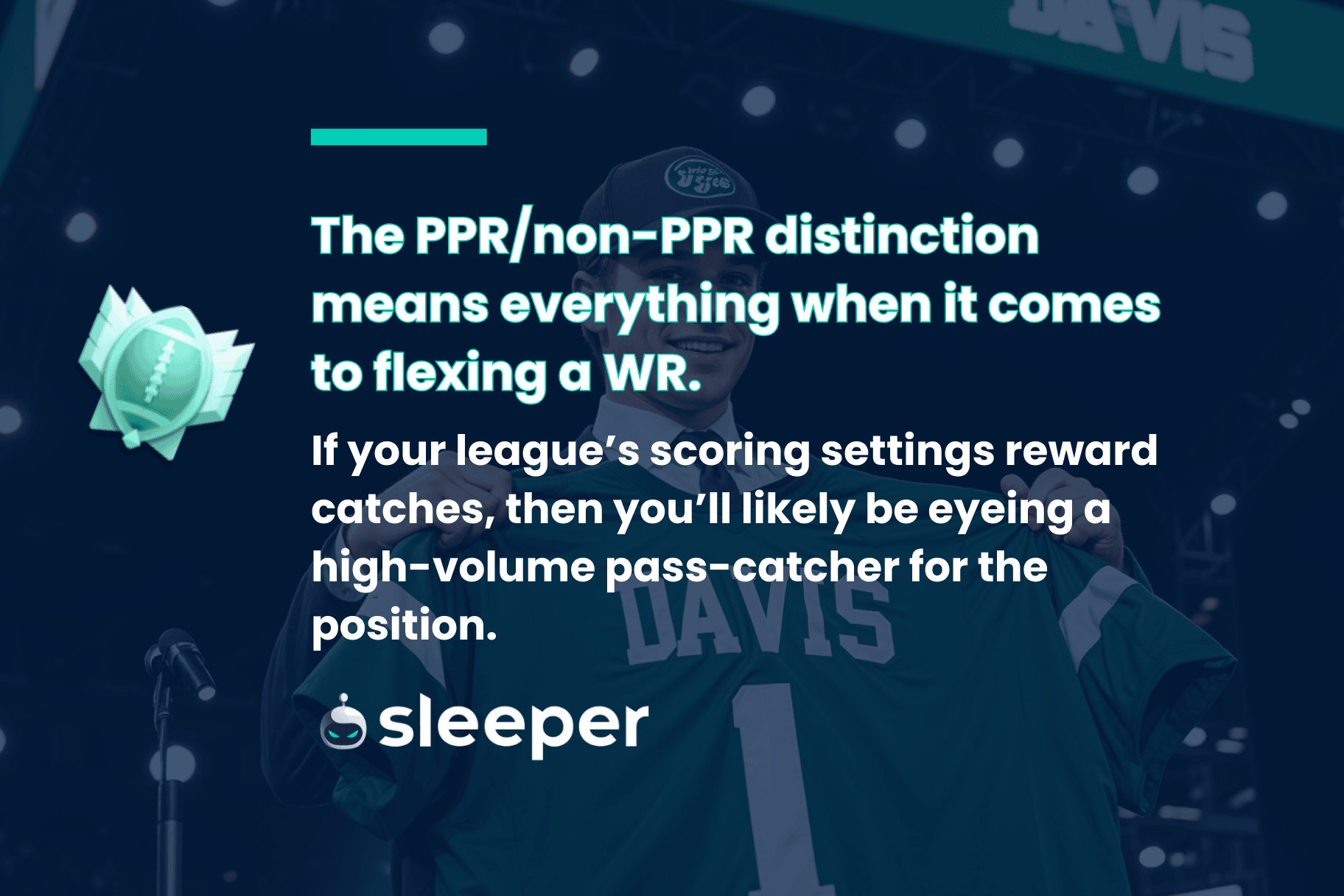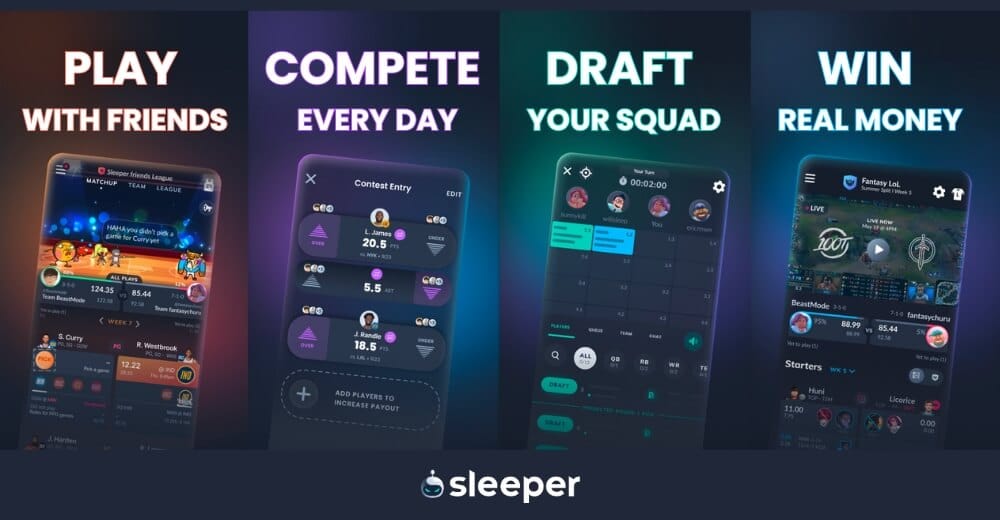The Swiss-Army knife of lineup positions — Flex — can make a big difference for your fantasy football team if utilized correctly. Here's how to do it.

When you’re setting your fantasy football lineup each week, many of your choices are going to be rather straightforward. Barring injuries or bye weeks, you’re trotting out the studs you drafted early at running back and wide receiver. You might not even have backup options at quarterback or tight end.
But when it comes to flex — the Swiss-Army Knife of fantasy football positions — that’s where the tough, difference-making decisions come into play.
Flex is the position where you’ll likely tinker the most and either be left patting yourself on the back or staring at your weekly results with regret, knowing you had a better option that went unused.
So how can you make the most of your flexes and optimize your team’s chances of winning? Read on to crack the code.
What Is Flex in Fantasy Football and How Is it Used?
Let's start with a simple definition. The flex position in fantasy football is a starting roster spot that allows you to use more than one type of position player, typically a RB, WR or TE. The flex allows you to get an additional potential point scorer into your lineup.
Flexes are used to supplement your fantasy team’s lineup and are also a great means to showcase a team’s depth. Depending on how many flex spots your league’s roster rules call for (it’s typically one, but two is not an uncommon alignment), those lineup places are valuable real estate and can really set your team apart.
If you’ve happened to load up at RB or WR in your draft, flex allows you to start more than just the usual two top-tier studs at either position and unleash the full potential of your arsenal.
Flexes also come in handy if your team is especially deep. They’ll afford you the flexibility to play the matchups you prefer and take more control of your options on a week-to-week basis rather than plugging in your nominally best players and hoping they excel every game.
Types of Fantasy Football Flex
Standard Flex
In most leagues, the flex can be used to get an additional running back, wide receiver or tight end in your lineup. Some leagues offer more than one flex (a customizable setting that many platforms, including Sleeper, have available), but the positional eligibility requirements stay the same.
Superflex
In Superflex leagues, quarterbacks are also able to be used as flex players, which adds a wrinkle to the draft and the season.
Quarterbacks are regularly the highest-scoring players each season, but because you can only start one and the pool of decent-performing QBs is deep enough, they’re typically not the first players off the draft board. But with the ability to start two, positional scarcity suddenly becomes a very real factor, and the value of quarterbacks skyrockets.
Go deep: Fantasy Football Scoring Systems
What Position Is Best for Flex in Fantasy Football?
There is no one definitive answer to that question, because it depends on a number of variables, but suppose that your league offers a standard flex roster setting. Here are the pros and cons for each of the possible positions that can fit that spot.
Running Back
If you’ve either gone big into running backs as part of your draft strategy or landed a game-changing, waiver-wire bellcow, then that’s good enough reason to toss another rusher into the mix.
Teams’ reliance on a sole running back has declined sharply over the years across the NFL. The select few backs who are in for a feeding frenzy of carries, however, are hard to dismiss. And if your league is a PPR (point per reception) or half-PPR one (0.5 points per reception), then a pass-catching running back makes perfect sense as a flex play, too.
The downside comes if your RB of choice is not a pass-catcher or a reliable scoring option. Even with a decent workload, a tally like 60 scoreless yards won’t do much for your bottom line.
Wide Receiver
The PPR/non-PPR distinction means everything when it comes to flexing a WR. If your league’s scoring settings reward catches, then you’ll likely be eyeing a high-volume pass-catcher for the position.
Those receptions, even at 0.5 points a pop, can add up and make a significant difference. They’re a great neutralizer against a running back who might see the ball 20-plus times but isn’t a pass-catcher and doesn’t score a TD.
On the flip side, targets can be a fickle beast on a week-to-week basis, and all it takes is a game script gone wrong or a poor matchup to turn your flex dream into a disaster. WRs have more boom-or-bust potential over that of other positions, because ultimately what you’re seeking is work volume, and a WR with, say, half a dozen targets will have to maximize each of those touches in order to pay off.
Even a RB who might not be a stud can still land 15-20 touches and goal-line work. That doesn’t guarantee anything, but it does open up more pathways to scoring opportunities. Sometimes success is about limiting your downside as much as it is about shooting for the moon.

Tight End
You’re unlikely to place a heavy emphasis on having two starting tight ends, unless, for whatever reason, the draft breaks a certain way and you put a premium on landing the entire top tier of a rather thin position.
For the most part, target and reception volume tallies aren’t going to be high enough to warrant starting an additional tight end, though, and you’ll be left in a feast-or-famine situation hoping for a touchdown to validate your pick. Even in TE-premium leagues, where tight end receptions are typically worth an additional 0.5-1 point, volume remains the key issue.
Of course, if you are in need of a dart throw due to injuries, bye-week absences and a thinned-out free agent pool, then so be it (TEs are a QB’s best friend in the red zone). But otherwise you will likely have better, higher-floor options at RB and WR than a second TE.

5 Tips to Draft the Best Flex in Fantasy Football
1. Consider your league’s roster and scoring settings
If you’re in a Superflex league, then you’re likely going to want to consider a QB for your flex spot before anything else. If you’re not, then it’ll most likely come down to RB or WR, but even then, the scoring system matters.
If it’s a PPR or half-PPR league, you’ll lean toward the pass-catchers. If it isn’t, and things become a bit more touchdown-reliant, then a goal-line running back may be your best bet. Regardless, make doubly sure that you know what kind of league you’re in, as it’ll make all the difference in how you strategize.
2. Study stats and analyze players’ past performance
It helps to know who has done what in the past; whose numbers from a season ago are candidates for regression to the mean; and who are the steady, under-the-radar, unflashy bedrocks who will still undoubtedly help your team.
Tip: ADP (average draft position) can be your best friend when trying to evaluate when and where to draft a player you're targeting.
3. Read up to uncover sleepers and best candidates
There’s more information about fantasy football available to consumers than ever before, so there should be no shortage of ways for managers to get acquainted with the landscape.
The downside is that all of that intel is theoretically available to your opponents, too, but if you put in the work, come prepared with a list of draft targets and the rounds where you want to land them, you should be in good shape.
4. Take Note of Key Offseason Moves
A change of scenery can do wonders for some players (and be detrimental to others), so be sure to understand the situation in which guys on your radar are entering for the season ahead.
If a WR coming off a big year suddenly goes to a team with a shaky QB (or, on the flip side, his QB leaves and he’s left with a lesser signal caller), then his potential for big targets and massive games is likely going to be capped significantly. Just because the player has a big name doesn’t mean it’s guaranteed to translate into fantasy points.
Rookies can also be league-winners. If you can identify the ones in smash spots, where the touches and big plays are going to be there for the taking, then you’ll be positioned well for success.
5. When All Else Fails, Opt For Higher-Scoring Teams
If you’re on the clock and in a bind, sometimes it can be as simple as taking a look at who a player’s quarterback is and hoping that, over the course of the season, a prolific offense means the fantasy points get spread around.
If your flex play is on a team that consistently lights up the scoreboard and piles on the yards, then you’ll stand to benefit.
Fantasy Flex FAQ
Is it better to flex a WR or RB?
It depends heavily on whether your league is a PPR/half-PPR league or a non-PPR league. It also depends on the tier of player we’re talking about and how the rest of your team is constructed. But ultimately, you want to flex the player with the potential to score the most points, regardless of position. If you wind up with three high-volume, pass-catching RBs, then by all means roll them all out.
Can I put a QB at flex?
In Superflex leagues, yes, you can start a QB at flex. But in all other league formats, flex is reserved for RB, WR or TE.
Do players get more points in the flex?
No. The scoring settings apply equally to all players in your lineup, so there are no bonuses (or lesser amounts) awarded for your flex plays.
Some leagues choose to offer player bonuses for certain stats (a three-point boost for 100 rushing yards or receiving yards, for example), but they apply to all positions.
Time To Go Flex On ‘Em With Sleeper
Now that you understand the intricacies of the flex position and how to utilize it differently based on what kind of league you’re in, it’s time to try your hand at a free, season-long fantasy league with Sleeper.
You can sign up on the website or by downloading the app, to play now and enjoy all the benefits and special features that only Sleeper offers. It differs from competitors by offering an ad-free experience, sleek interface and intuitive draft and trade tools to make even the most novice of fantasy players feel in command. The dynamic chat capabilities add a social element to your league to ramp up the fun, and there’s a variety of draft and league setups available to match your preference.




